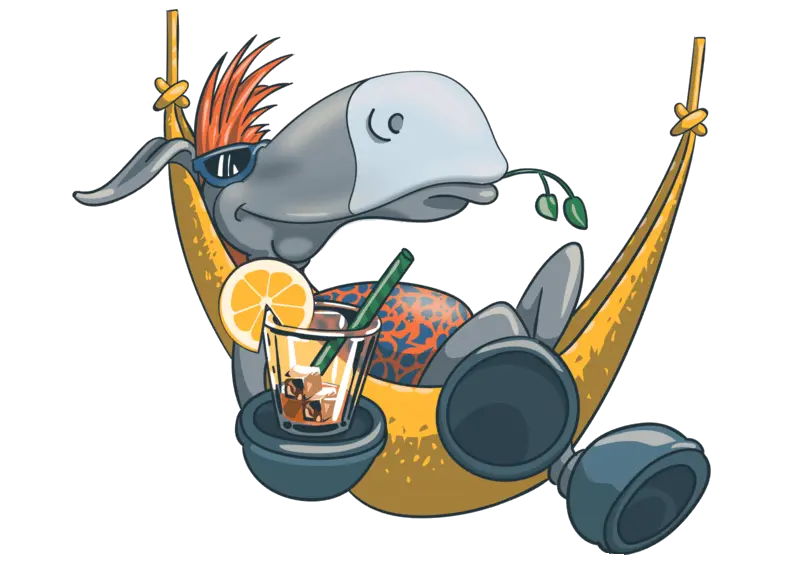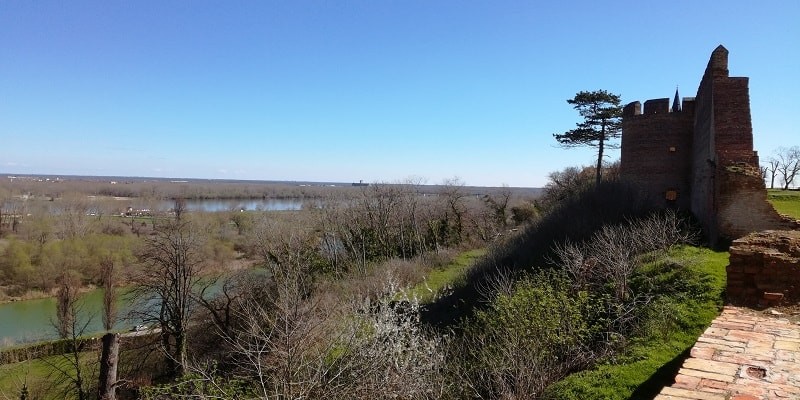
Experiences from Croatia
28.12.2022.
Rain was following us all the way to the entrance to Slavonia, somewhere around Požega where the sun welcomed us. "Finally we ran away from that rain," I thought in that moment. However, the cloud caught us up shortly, in Osijek already, which was our first stop.
Very soon Osijek has showed us its power, its river Drava, around which Osijek has been raised. The rain that was constantly following us did not prevent us from walking through the walking trail along the river. On the Drava river has been located one of the recognizable symbols of Osijek , suspension bridge known as Pedestrian Bridge across which you can get to the other side of river, for example to Osijek Zoo, which we have not visited this time, but have continued on the same side of the Drava. Soon our eyes were set on the fortress, known as the symbol of the city of Osijek, Tvrđa. Today, these are only the parts of the formerly one of the largest and one of the most modern military fortress in Europe. Though only the remains, even today the Osijek fortress seems very powerful. Surrounding of the fortress cointaines a lot of greenery, parks and gardens, which increase the value of fortress.
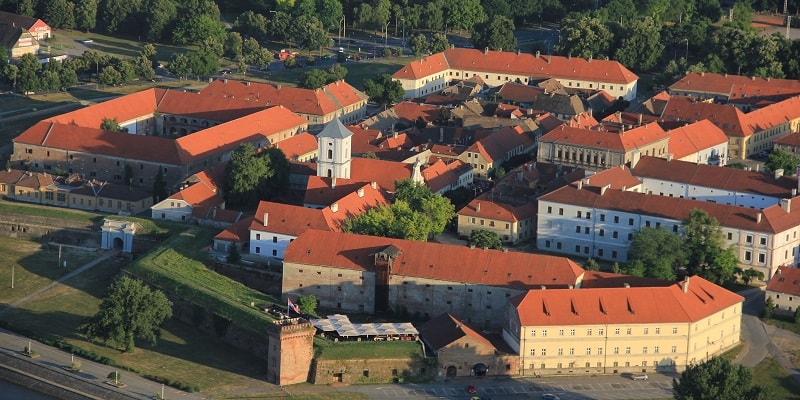
By crossing Drava, we left Osijek and Slavonia behind and headed towards Baranja, more precisely towards Ethno Village Karanac. Karanac gives you an authentic experience of Baranja village, which might be noticed by traditional family estates and farms decorated in the old style. Thus, on most family farms, you can see and play with domestic animals, enjoy traditional lifestyle and domestic food. For accommodation in Baranja, we have chosen the autochthonous family farm Sklepic on which hosts welcomed us warmly. The place is oasis that will you bring back to the past, in time when there was no TV and no cell phone. For the breakfast a real treat of home-made products waited us on the table. All this was spiked with the story of hosts who left the city life and devoted their lives to this family farm and to Baranja village.
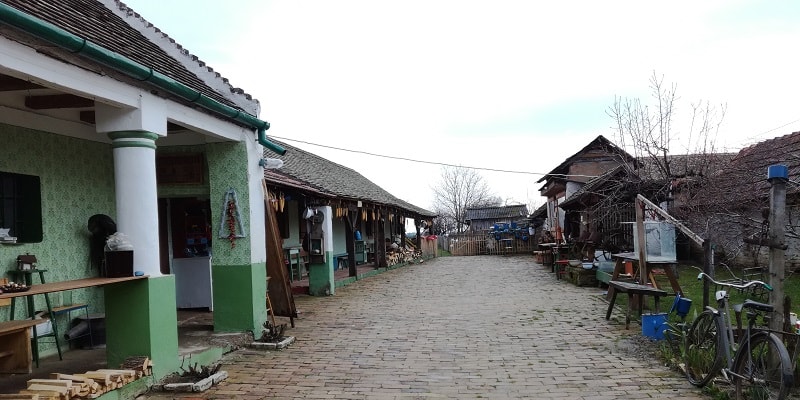
The path further led us through numerous vineyards. Baranja's area is far known for its vineyards and wineries, such as Josic, Kazalić, Belje, Kolar and many others. Driving on local roads led us through Beli Manastir and the surrounding smaller places all the way to Batina. It is the place bordered with three countries; while standing on the Croatian side, across the Danube River, on the one hand, it looks towards to Hungary and, on the other hand, to Serbia. This is the area where Battle of Batina during the Second World War was led. As a reminder on this, a monument and the Memorial center of Batina Battle is placed here in Batina. Very close to the center of this little place, the Green Island is located, a weekend resort with a sandy beach on Danube river.
We headed further to the south and through village Tikveš have reached Nature park Kopački rit. Kopački rit is a flooded area bordered by two rivers, the Danube in the east and the Drava in the south. The nature park was named after the nearby village of Kopačevo, while the name Kopacki rit when translating from the Hungarian means a swampy meadow broken down into smaller fields - meadows, lakes and similar. The nature park is known as a home of various birds species. Here you can meet white and black roses, herons, pheasants, wild ducks, eels and many other species. However, will you see any of these, depends on time of the year you are visiting Kopacki rit and of course, how lucky you are. Nature park can be partly visited on foot, while other parts of the park can be seen by tourist train, tourist boat and bicycle. All information about working hours and ticket prices can be found on the official park site.
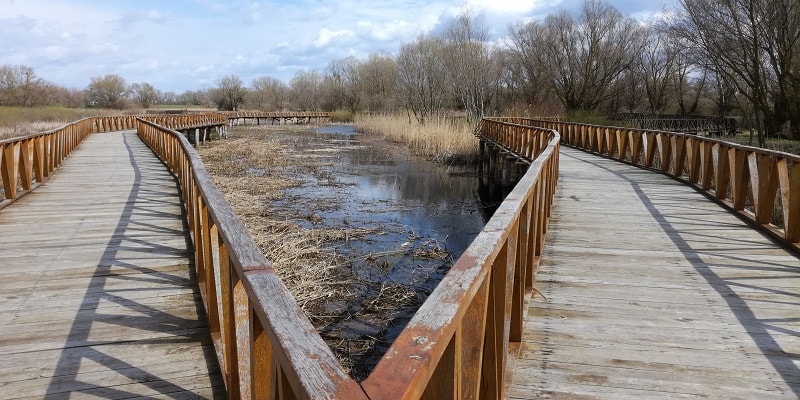
Our next destination was Vukovar, the city for which I expected the consequences of the Homeland War would be still visible. Although not seen on the architecture of the city, some gloomy feeling on the streets could not have been unnoticed.
Vukovar is a city that has been developed on the Danube River. Through the city flows the river Vuka, which at this point divides two geographic regions, Slavonia and Srijem, and then flows into the Danube. There is a pedestrian bridge on Vuka river named after Jean Michel Nicolier, a young French volunteer who filed for Homeland war in order to help Croatia. Unfortunately, his life was lost on Ovčara. He has been awarded with several mortal honors and one of these is a statute on this pedestrian bridge.
Old town streets hide old baroque buildings with distinctive vaults. On the main town square a Workers Hill building is placed which represents former Grand hotel. Currently, in the outer setting, the images of Vukovar as the city once before had looked like may be seen. Walk along the river willbring you to several sights of this city. On one side, there is baroque Eltz castle from the 18th century. Since 1968, the building has been used for purpose of Vukovar City Museum. Although completely destroyed in the Homeland war, the castle was restored in 2011. A walk in the other direction will lead you to Vukovar water tower, one of the most famous symbols of Vukovar. The Tower is a construction that was completely damaged in the Homeland war, but on which the Croatian flag has been always crowned, even at the time of the siege of Vukovar. Near Vukovar there is also the memorial center of Ovcara, the Museum of Vučedol culture etc. We have left visit to these monuments for some other time.
Our next destination was Ilok, the easternmost town in Croatia, stretching on the slopes of Fruška gora. By entering the city you will notice numerous signs pointing to numerous wine basements and wineries. One of the most famous Croatian wineries, Iločki podrumi, is placed here. Apart from being able to try the finest wine sort - traminac and other varieties of white wine, you can sleep inside this complex, eat some food and make a tour through the wine basement accompied with an interesting story expressed by friendly guides. You can even buy a wine from 1947, which was especially appreciated by the palace of Great Britain and Queen Elizabeth II.
Above the basement, there is imposing palace Odescalchi within which the Ilok Museum of Art is located. From city walls, you may take a breathtaking view, especially if you catch a sunset like we did. The view looks towards Danube River which is surrounded by greenery and towards a city in Serbia, Bačka Palanka that has been located on the other side of the river. Within this building there is also the Franciscan church and the monastery of Ivan Kapistran.
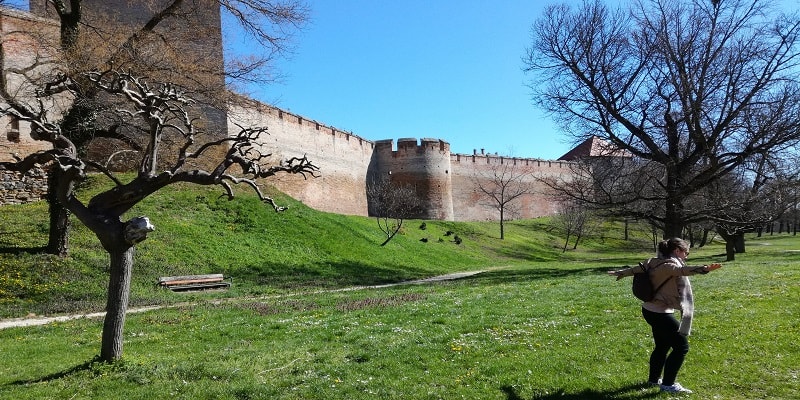
Considering the gastronomic offer of Ilok, it should be mentioned that the choice is narrowed, but one the few restaurants worth mentioning is Danube Hotel on the Danube River, that just recently has received Michelin's recommendation. We strongly recommend to try river fishover there!
The offer of private accommodation in this part of Croatia is not wide as comparing to those on Adriatic coast. Regardless of that, in almost every place in this part you may find friendly hosts who will offer you accommodation in their rooms, apartments or holiday homes in which you can experience interesting culture and customs of this lesser known part of Croatia. For sure, vacation in this parts has its advantages and charms since you will be spared of the crowds of people usual in tourist places and, also, not to forget that you can enjoy the beautiful and preserved nature and clean air. These are the reasons why I recommend visiting the easternmost parts of Croatia where you can see the famous Slavonian plain but also the powerful rivers, preserved swamps and idyllic hills.
Osijek Vukovar Ilok Kopački rit
Our recommendation
Where to go, stay and what to do?
